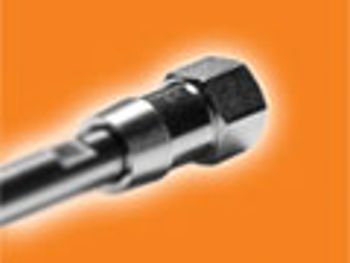
LCGC North America
Detectors based on ultraviolet absorbance are the most common detectors in use for liquid chromatography.

LCGC North America
Detectors based on ultraviolet absorbance are the most common detectors in use for liquid chromatography.

LCGC North America
How to optimize the key variables in HPLC analysis-sample preparation and column selection

LCGC North America
There can be significant benefits by standardizing HPLC columns in a pharmaceutical development laboratory. Here is a story of how one organization attempted to encourage its staff to develop HPLC methods using fewer column brands and dimensions to reduce waste and efforts in method transfers downstream.

LCGC North America
The principal aim of this work was to provide a perspective with practical utility in streamlining the chromatographic method development in pharmaceutical industries based upon predicting the chromatographic retention times from molecular structures. Workflows were suggested with a focus on reversed-phase LC, IC, and HILIC as the three major techniques. Unlike HILIC, retention prediction in both reversed-phase LC and IC can benefit from the maturity of these techniques and the transparency of their retention mechanisms. In reversed-phase LC the solute coefficients in the hydrophobic subtraction model and in IC the a and b values in the linear solvent strength model can be the subject of modelling with their subsequent use in retention prediction. A workflow for HILIC can be based on the design of experiments approach, to account for all major contributors to the retention mechanism, and direct correlation of experimental retention times to the molecular descriptors.

LCGC North America
The evaluation of the oral uptake of engineered nanoparticles (ENPs) contained in personal care products like mouthwashes is of great relevance to estimate the potential hazards and the toxicity of engineered nanomaterials (ENMs). Various experiments were carried out while two commercially available mouthwash products (named M1 and M2) were selected as samples of interest. Asymmetric flow field-flow fractionation (AF4) was chosen and optimized as particle separation technique and two detectors were on-line coupled while dynamic light scattering (DLS) was used for evaluation and signals obtained by UV-vis at 254 nm were used to gather additional information about the fate of the ENPs.

LCGC North America
The rise of microsampling raises questions about representative sampling.

LCGC North America
As Klaus Unger turns 80, we review his contributions to the field.

LCGC North America
The future of biological and clinical research will depend on technological innovations and cross discipline cooperation as science seeks a deeper understanding of increasingly complex biological systems. The 2016 recipient of the AES Mid-Career Award, Amy Herr, and her team at the University of California Berkeley have explored these areas using a combination of chemical engineering, mechanical engineering, and electrical engineering with strong foundations in biology, material science, and analytical chemistry to innovate new microfluidic analytical technology. She recently spoke to LCGC about this work.

LCGC North America
Populations worldwide are exposed to polychlorinated biphenyls (PCBs) that can be harmful to human health. LCGC spoke to David Megson from Ryerson University in Toronto, Canada, about recent developments in assessing human exposure to PCBs and chiral enantiomer fractions (EFs) in the workplace.

LCGC North America
Click the title above to open the LCGC North America August 2016 regular issue, Vol 34 No 8, in an interactive PDF format.